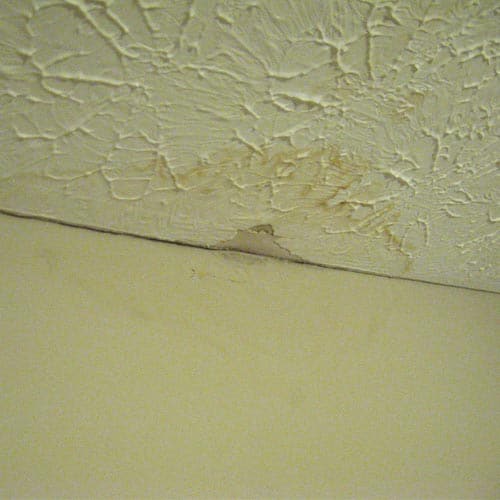You may have observed discolorations and stains on your ceiling, and even faced the problem of water seeping from the unit above. This is known as ceiling leaks and usually happens due to wear and tear of the concrete floor as well as waterproofing membrane in the unit above yours. Commonly found in ageing buildings, it usually occurs in wet areas such as toilets, bathrooms or backyards.
What should you do when a ceiling starts leaking?
If you stay in a HDB, under the lease agreement, these costs would usually be split 50-50 between the upper and lower floor flat owners for a home ceiling leak. A waterproofing contractor should be contracted and engaged for repairs. If you happen to be staying at the top floor, given that the leak is from the roof that is a common property of the town council, you should reach out to the Town Council. (http://hdb.gov.sg/cs/infoweb/ceiling-leak)
If you live in a Condominium, under the Building Maintenance and Strata Management Act (BMSMA), the leakage is presumed to be caused by the unit situated immediately above the affected unit. In that case, the owner of the unit above would usually be liable for the repair charges. Of course, a waterproofing specialist would have to be contracted to identify the root cause of the problem and better advise on the source of the leak. If there is a dispute, the flat owners can make an application to the Strata Titles Board to resolve the problem.
Waterproofing Solutions
There are a few ways to address these home ceiling leak issue depending on the severity. Re-screeding is one option that would involve hacking and removal of floor tiles, laying new waterproof membrane, and then reinstalling floor tiles. However, this is often not ideal for flat owners as it is a dusty and dirty process that can be invasive.
How can we help?
Other non-invasive and quicker methods that do not involve hacking would be via
1) Polyurethane (PU) injection grouting
This is essentially a chemical injection repair method that could provide a permanent seal when properly and professionally injected into a crack, usually appropriate in concrete slabs. The process involves drilling into the crack, flushing it with water, and injecting polyurethane. As compared to coating the surface with waterproofing chemicals, this solves the root of the problem by fixing the concrete crack. Therefore, we mostly recommend this method.
2) Clear Penetrative Waterproofing Solution
This method involves flooding the toilet surfaces with waterproofing chemicals that seals both the surface and allows deep penetration into the surface. The chemicals provide a coating that repels water and lasts regular wear and tear. However, this may not be fixing the source of the problem as it only protects the concrete slab and does not solve the crack issue.
For all our waterproofing solutions, you may read more at https://swcconstruction.com.sg/waterproofing/. If you’re looking for a waterproofing specialist, make an enquiry now for a free consultation.



